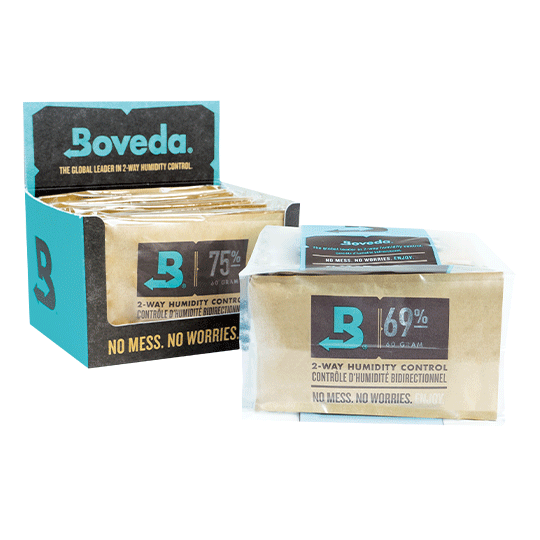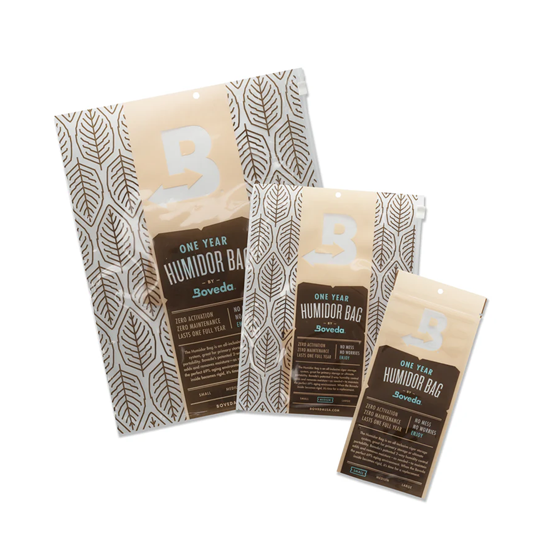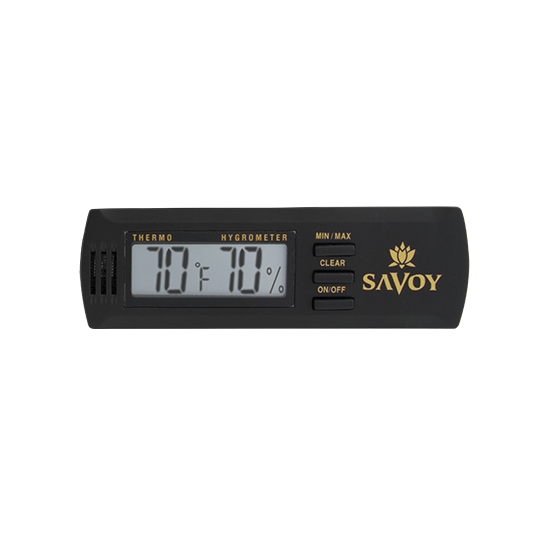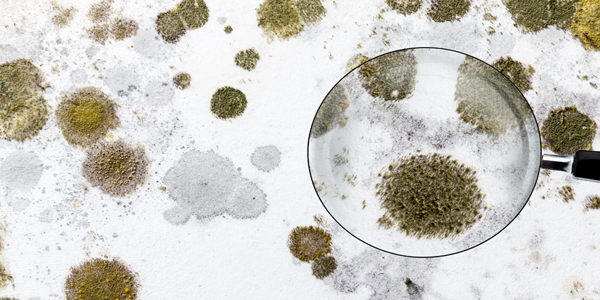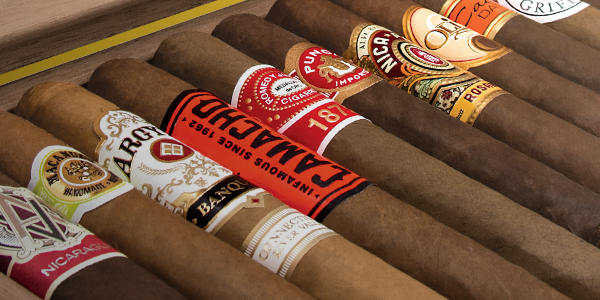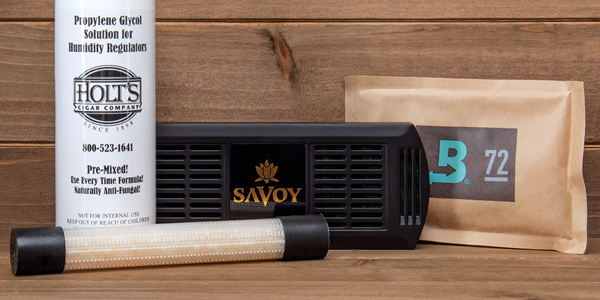Cleaning Humidor Mold
Uh-oh. You’ve got a mold outbreak in your humidor. Catching mold early and mitigating its effects are critical in saving your cigars and your humidor. We’ve already outlined the best steps for preventing cigar mold in the first place, but mold can infect a humidor despite your best efforts. When it happens, follow our advice for cleaning and removing mold from your humidor and disinfecting the box. But, before we tell you how, let’s confirm that you’ve got mold and decide if your humidor is worth saving.
Is It Mold or Plume?
Many cigar lovers mistake cigar plume for mold, but there are big differences between the two. Small white dots that form on the surface of a cigar’s wrapper are cigar plume. Plume is harmless, and it’s a sign your cigars are aging correctly. You can gently brush plume off a cigar and smoke it. Cigar mold, on the other hand, is green or blue, and it can form on the wrapper as well as the foot of a cigar, and it won’t brush off. Mold has a sticky, pasty texture and can emit a musty aroma. If there are indications mold is growing on any of your cigars, remove and discard them immediately. And, relocate any non-moldy cigars to a Ziploc bag or plastic container like a Tupperdor, and toss a Boveda pack inside, where you can monitor them independently to ensure mold does not continue growing.
Should You Throw Out a Moldy Humidor?
Before you go through the process of removing mold from your humidor, decide if discarding the humidor is best. If the mold outbreak is extensive – in every corner and on most surfaces inside your box – it may be easier to simply replace your humidor, especially if it’s an inexpensive model. If you’ve got a lot of money invested in your humidor, then it’s worth a shot to disinfect the mold and re-humidify the box. Replace your humidification device or Boveda packs, regardless. It’s best to start with a new humidification source because one that’s been exposed to mold can cause to mold to recur even after you clean the box.
10 Steps for Removing Mold from Your Humidor
Note: If you’re using an acrylic humidor, you may be able to scrub it out thoroughly or even run it through the dishwasher. It’s easier to remediate mold in a stark plastic environment than in a traditional cedar box.
Here is the best way to remove mold from a wood humidor.
1. Remove Your Cigars
Temporarily remove all the cigars from your humidor and separate the moldy cigars from the non-moldy ones. Sanitizing a moldy humidor takes weeks, so you’ll need to store your cigars without a humidor for a while. We recommend a humidor bag, a Ziploc bag, a Tupperdor, or a mason jar. Toss a Boveda pack in to keep them fresh. This way, if any cigars that look okay today begin to show signs of mold over the next few weeks, you’re not ruining another humidor or another humidification device.
2. Discard All Moldy Cigars
Toss out any cigars that appear to have mold on them, even if it’s a trace amount. Cigar mold will continue to grow on an infected cigar, and it will continue to infect whatever environment you’re storing them in.
3. Discard the Humidification Device & Replace It
Trying to salvage the humidification unit from a moldy humidor is too risky. The probability that you’ll re-contaminate your humidor after it’s been cleaned is high. It’s better to invest in a new humidification device or new Boveda packs to be safe.
4. Vacuum the Humidor Thoroughly
When all of the contents of the humidor have been removed, thoroughly vacuum the interior to suck out any loose bits of mold or tobacco that was exposed to mold.
5. Sand the Interior of the Humidor
Gently sand the inside of the box with #150 extra-fine grit sandpaper. In most humidors, the lining is cedar, but it’s thin, so you don’t want to sand deeper than necessary. If mold has penetrated deeply into the walls of your humidor, replacing the box may be necessary. Once you’ve sanded the affected areas, vacuum the interior again.
6. Sterilize the Interior with Isopropyl Alcohol
With a clean cloth, carefully wipe the interior down with a small amount of isopropyl alcohol. You don’t want to saturate the inside, but dab the surface enough to wet it. The alcohol will kill any lingering mold spores.
7. Wipe the Interior with Steamed Distilled Water
After wiping the interior down with isopropyl alcohol, wipe it down again with 100% steam-distilled water. This will dilute any alcohol that has seeped into the lining of the box. Leave the humidor open and let it dry out for a day or so.
8. Re-humidify the Humidor
With a new humidification device or new Boveda packs, prep and season your humidor just like you did when it was new. Wipe the interior down with distilled water, charge your humidification source, close up the box, and repeat until the humidity stabilizes at roughly 70% RH.
9. Wait for Two Weeks (or Longer)
Once you’ve achieved a consistent 70% RH in your humidor, wait for a minimum of two weeks, and closely monitor your humidor to ensure mold does not return while there are no cigars inside. Waiting longer than two weeks offers added insurance.
10. Return Your Cigars to the Humidor (If No Signs of Mold Appear)
When the coast is clear and your humidor appears to be mold free, you can store cigars inside again. To be safe, you may want to start with an entirely fresh batch of cigars. In other words, the cigars that you saved from the moldy environment are best kept in an isolated environment while you smoke through them. You could risk reintroducing mold to your clean humidor by putting them back inside.
Causes of Cigar Mold
Mold can grow for a variety of reasons, but preventing it is easier when you’re aware of the causes. Here are some common culprits that can cause mold in your humidor.
1. Using Non-Distilled Water
One of the biggest causes of cigar mold is using tap water or bottled water that is not distilled in your humidor. The type of water you use in a humidor matters. You’re better off letting your humidor dry out than humidifying it with non-distilled water. Propylene glycol works fine too, but using tap water in a humidor just once can trigger an outbreak of mold.
2. Temperature or Humidity Are Too High
Another common cause of mold is over-humidifying your cigars. It’s tempting to boost the humidity to make your cigars softer and spongier than they need to be. A lot of folks assume softer cigars are fresher. This is not true. 70% RH (relative humidity) and 70 degrees Fahrenheit are the best conditions for storing cigars. Exceeding 72% and 72 degrees can encourage mold in a humidor with a tight seal.
3. Cigars Were Exposed to Mold Before You Bought Them
It’s rare that a moldy cigar will come from a good retailer, but if you’re trading cigars with others or someone gave you cigars as a gift, especially Cubans, there’s a chance they could have been exposed to mold before you got them. If you didn’t buy cigars directly from a retailer, it never hurts to store them in a humidor bag and monitor them for a few weeks to ensure no mold develops before you transfer them into your humidor.
4. Bacteria from Your Hands
As a general rule, it’s good to wash your hands before you rifle through your humidor when you’re organizing it or searching for a cigar. Bacteria from your hands can cause mold to grow if it’s transferred to any cigars in the box.
5. Not Enough Circulation for Humidity and Air
Leave at least 20 - 25% of your humidor empty to allow air and moisture to circulate freely, and rotate your cigars on a regular basis. If your humidor is packed to its maximum capacity, the cigars closest to your humidification source prevent humidity from moving around. The obstruction of moisture can encourage mold to grow in one area inside the box.



